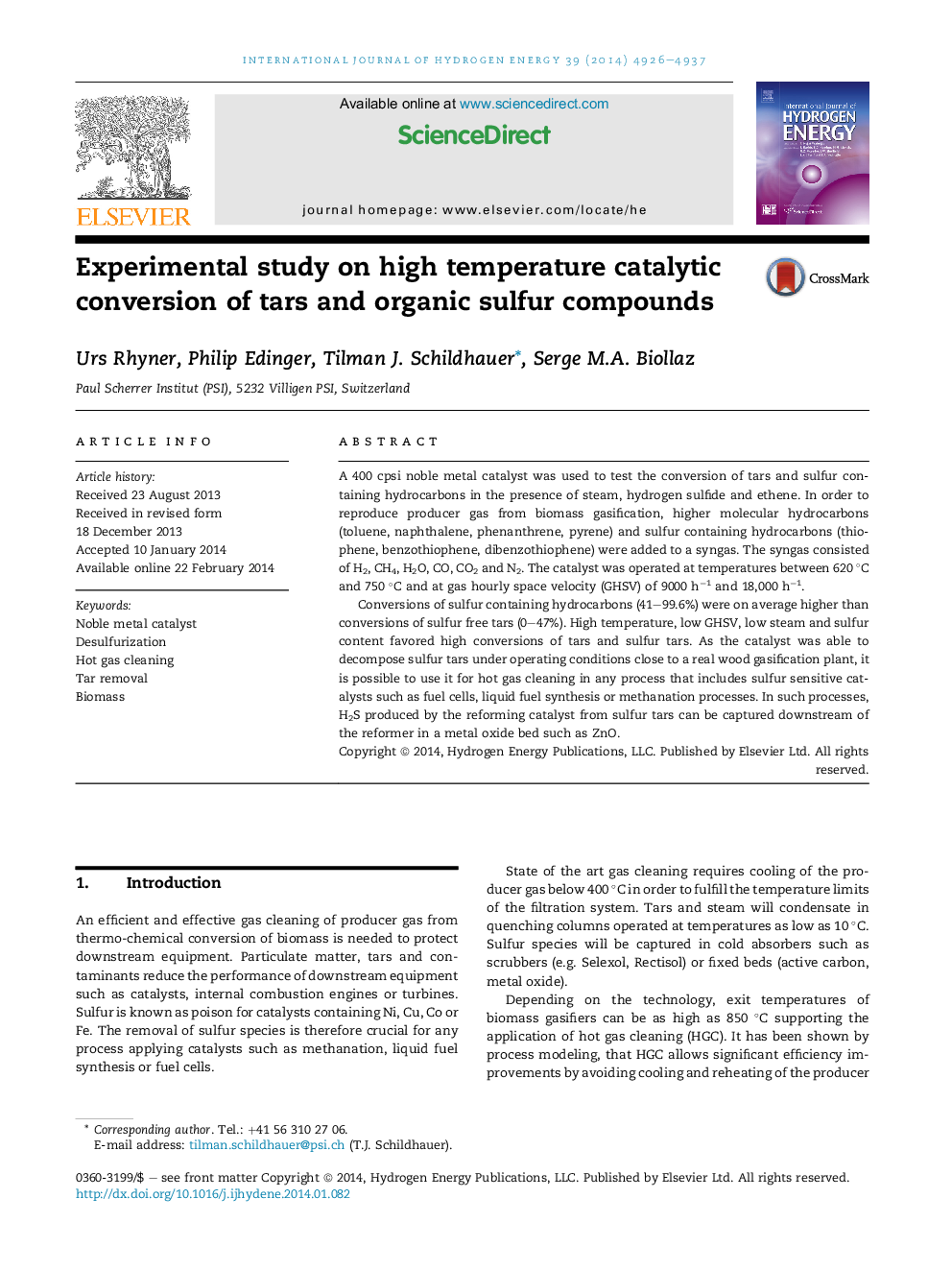| Article ID | Journal | Published Year | Pages | File Type |
|---|---|---|---|---|
| 1281259 | International Journal of Hydrogen Energy | 2014 | 12 Pages |
•A noble metal catalyst was used to test the conversion of tars and sulfur tars.•The catalyst was able to decompose sulfur tars under realistic operating conditions.•Conversions of sulfur tars were higher than conversions of sulfur free tars.•The catalyst enables the desulfurization in hot gas cleaning processes with metal oxides.
A 400 cpsi noble metal catalyst was used to test the conversion of tars and sulfur containing hydrocarbons in the presence of steam, hydrogen sulfide and ethene. In order to reproduce producer gas from biomass gasification, higher molecular hydrocarbons (toluene, naphthalene, phenanthrene, pyrene) and sulfur containing hydrocarbons (thiophene, benzothiophene, dibenzothiophene) were added to a syngas. The syngas consisted of H2, CH4, H2O, CO, CO2 and N2. The catalyst was operated at temperatures between 620 °C and 750 °C and at gas hourly space velocity (GHSV) of 9000 h−1 and 18,000 h−1.Conversions of sulfur containing hydrocarbons (41–99.6%) were on average higher than conversions of sulfur free tars (0–47%). High temperature, low GHSV, low steam and sulfur content favored high conversions of tars and sulfur tars. As the catalyst was able to decompose sulfur tars under operating conditions close to a real wood gasification plant, it is possible to use it for hot gas cleaning in any process that includes sulfur sensitive catalysts such as fuel cells, liquid fuel synthesis or methanation processes. In such processes, H2S produced by the reforming catalyst from sulfur tars can be captured downstream of the reformer in a metal oxide bed such as ZnO.
Graphical abstractFigure optionsDownload full-size imageDownload as PowerPoint slide
